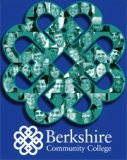A group of six faculty and staff gathered in the CTL last Friday to consider the 2012 Horizon report (full report is at: http://net.educause.edu/ir/library/pdf/HR2012.pdf). The first point noted was that the report lacked any clear information about the accessibility of the two technologies that are impacting us now: mobile apps and tablet computers. (The conversation on other technologies in the Report: learning analytics, gestural computing, etc., took a back seat to these two topics.)
The group felt that this new wave of technology — tablets and smartphones supported by thousands of apps — offers an amazing opportunity to enhance student learning, but also that there is a very dramatic challenge for both faculty and students to learn what and how to use it.
We discussed the proliferation of smartphones on campus and the potential for addressing the digital divide (but see this perspective as well: http://www.nytimes.com/2011/12/04/opinion/sunday/internet-access-and-the-new-divide.html), which is a very relevant issue at the public community college. Instructors shared stories of students with either marginal or no computer access, or skills, and how this can severely handicap their ability to be successful, especially in technology-intensive courses. There were also stories of students using their smartphones to access Moodle, take quizzes, check assignments, etc. However, there is not evidence that students are submitting writing through a smartphone, given the limited keyboard and screen size of the devices.
One instructor uses mobile devices (iPads) in her class, and shared that the ability for students to interact in small groups with apps, to experiment, and to build shared knowledge, has revolutionized the level of work she can assign.
If mobile devices become a part of the classroom, what will this mean for our (already challenged) Internet bandwidth on campus?
Participants felt that a “freshman experience” course for all students that included building their ability to use mobile devices and apps would serve students well for their future classes and for their careers.
The conversation then bridged into pedagogical considerations in the use of technology. If gestural computing and dictation replace keyboards, does that offer the same critical thinking/processing sequence to the student? How will documents be proofread, revised, delivered? If we use learning analytics to learn detailed information about student learning patterns and use “differentiated instruction” to meet individual needs, will we lose serendipity in the process?
This was a great discussion and an important aspect of technology planning and strategy. Look for more sessions in the future!
